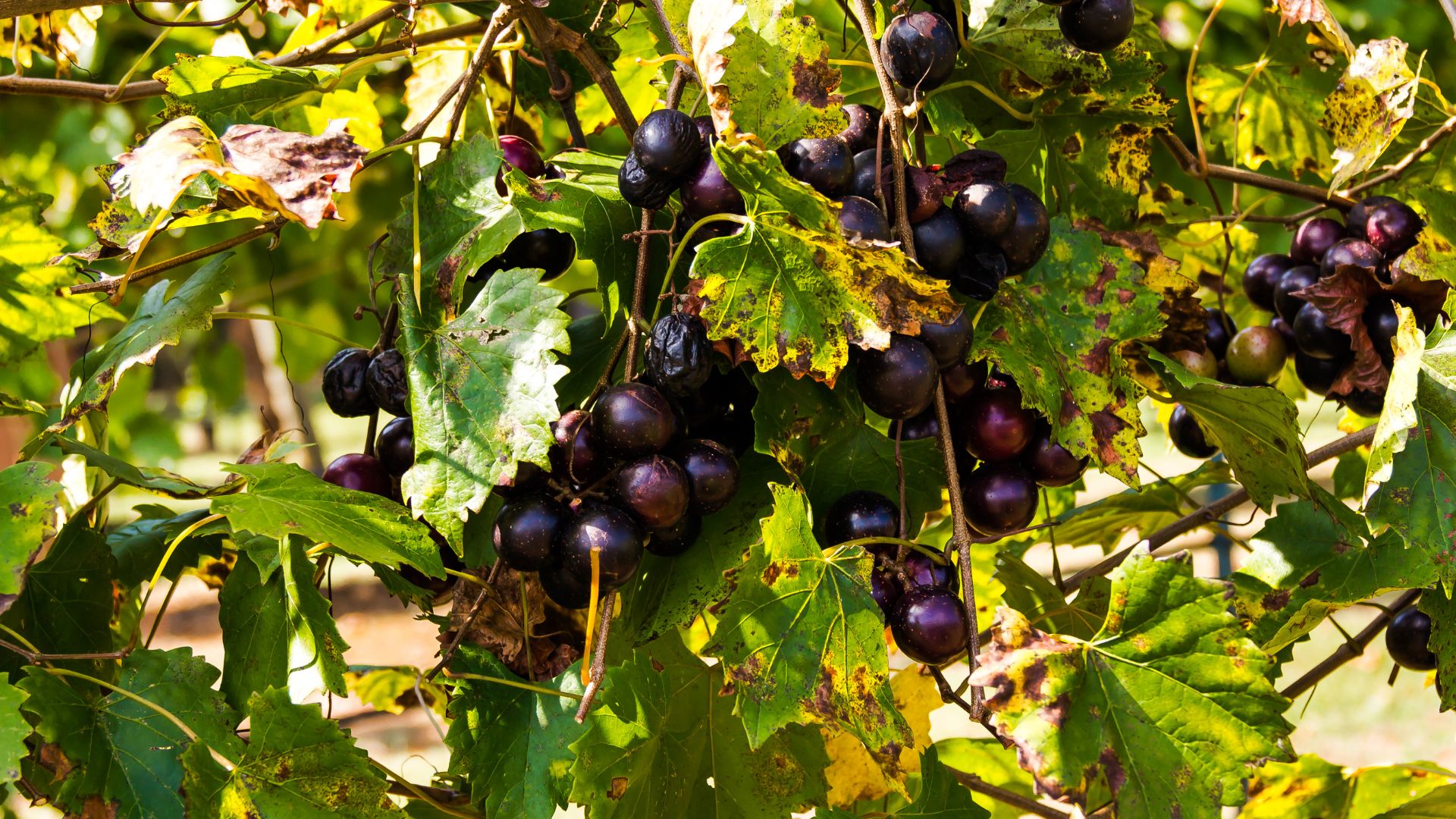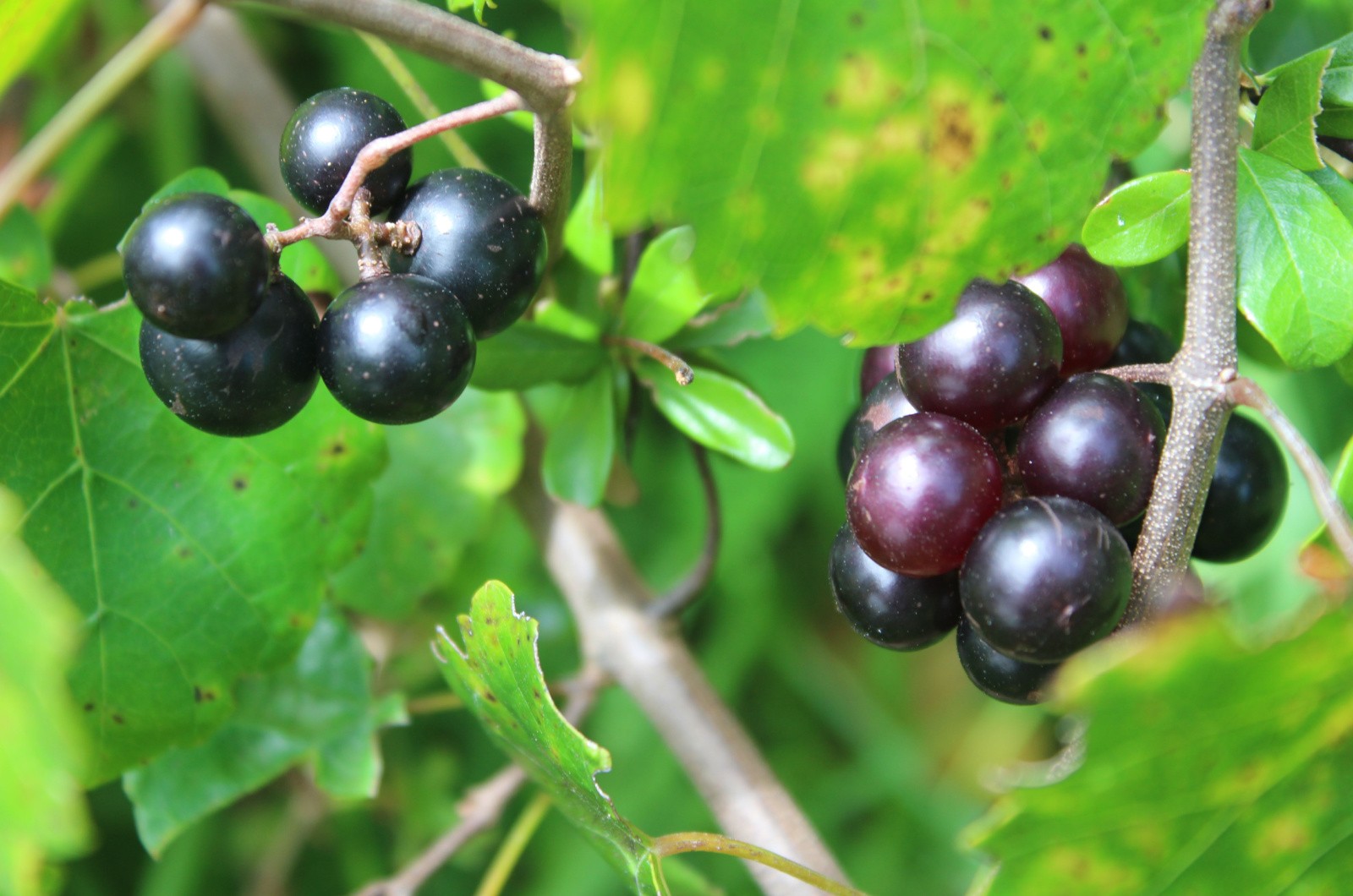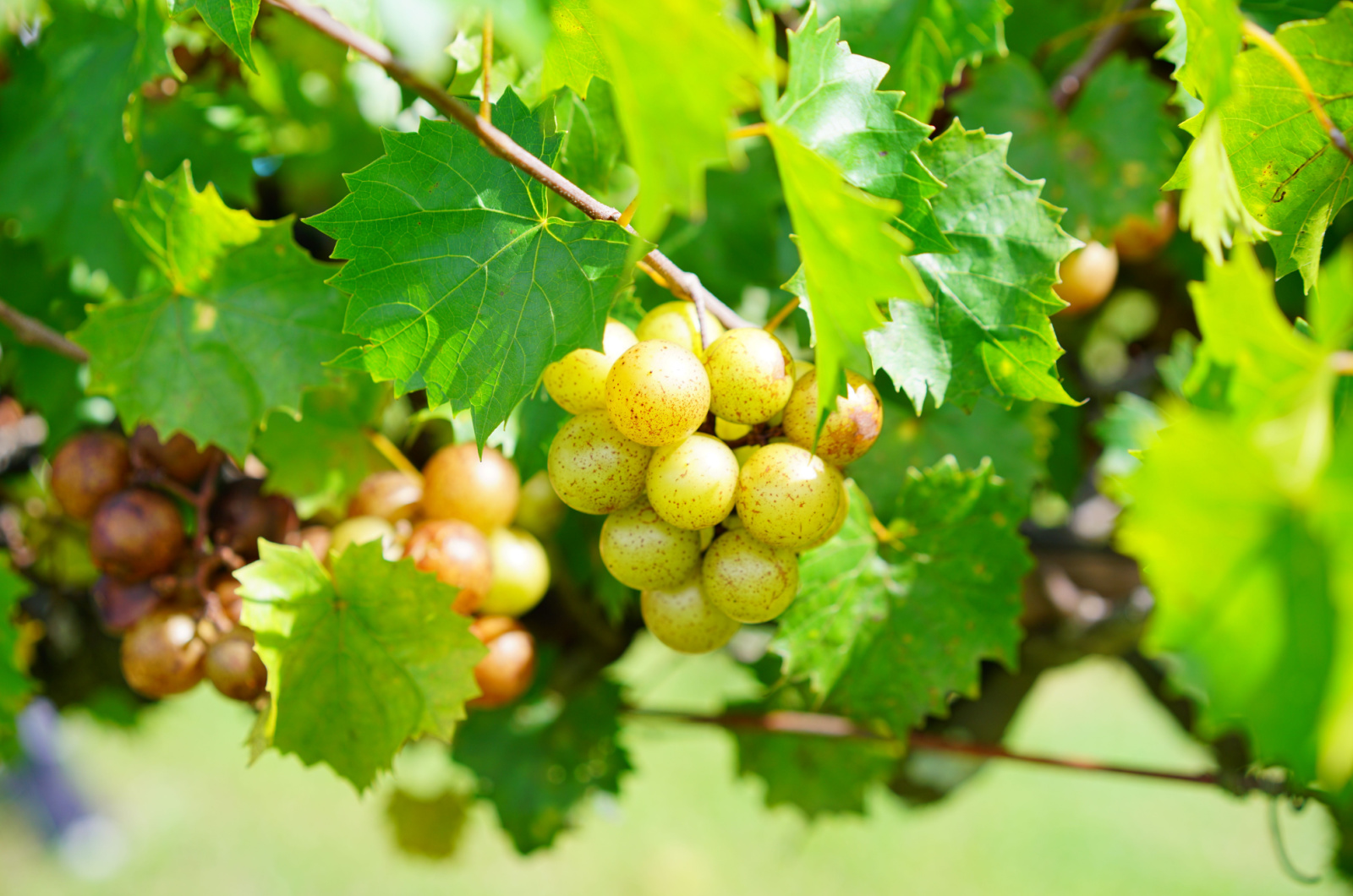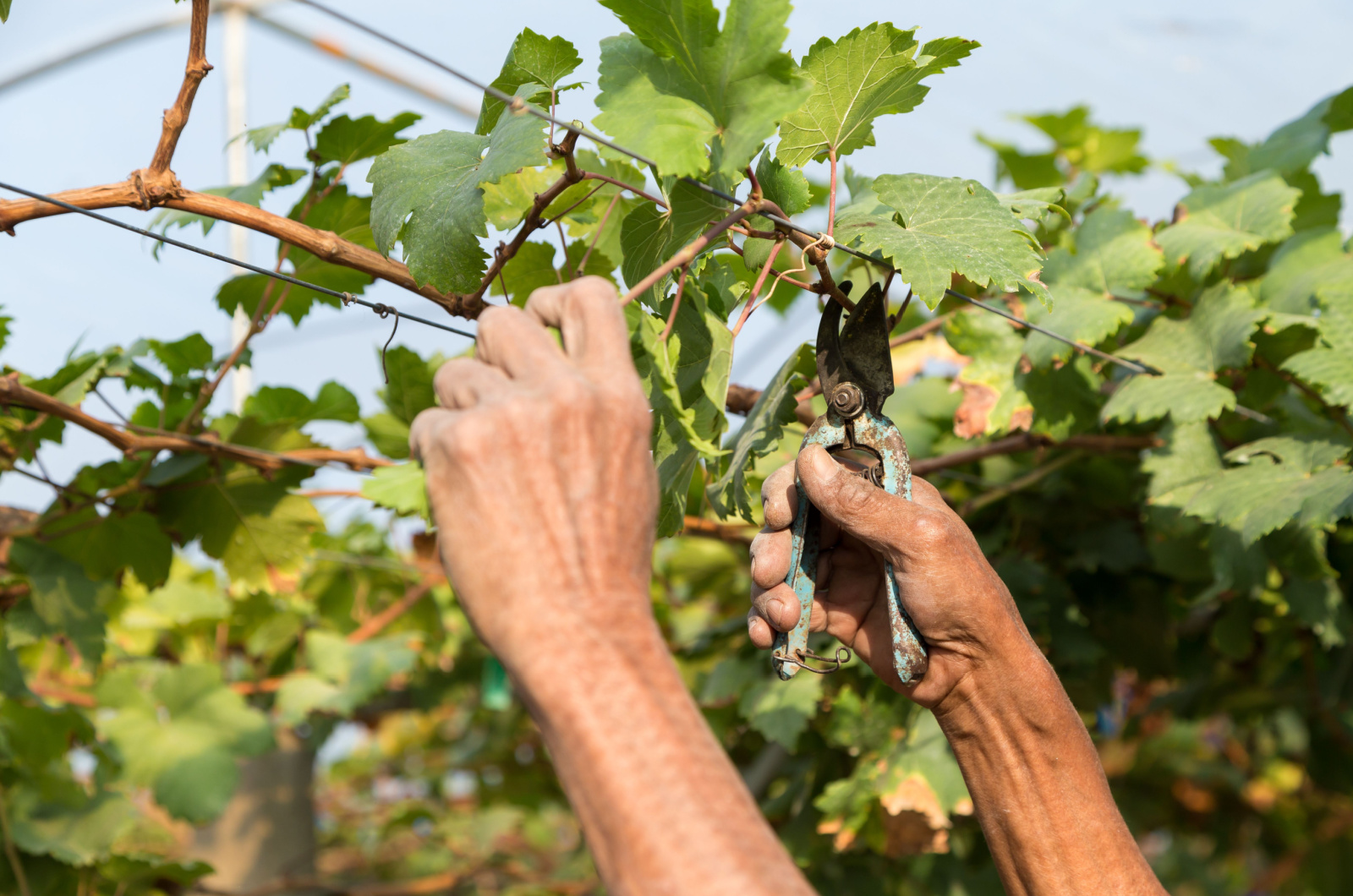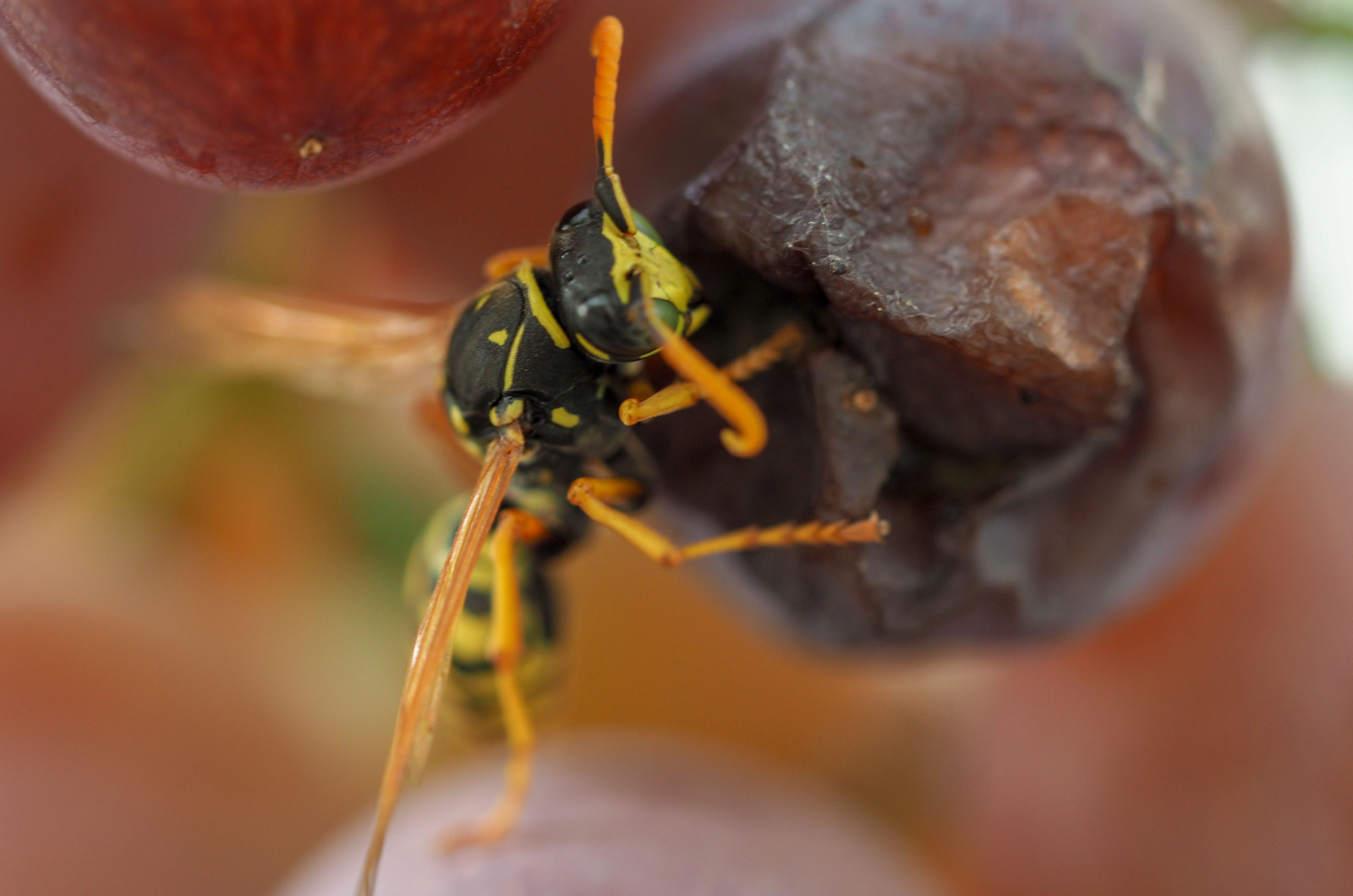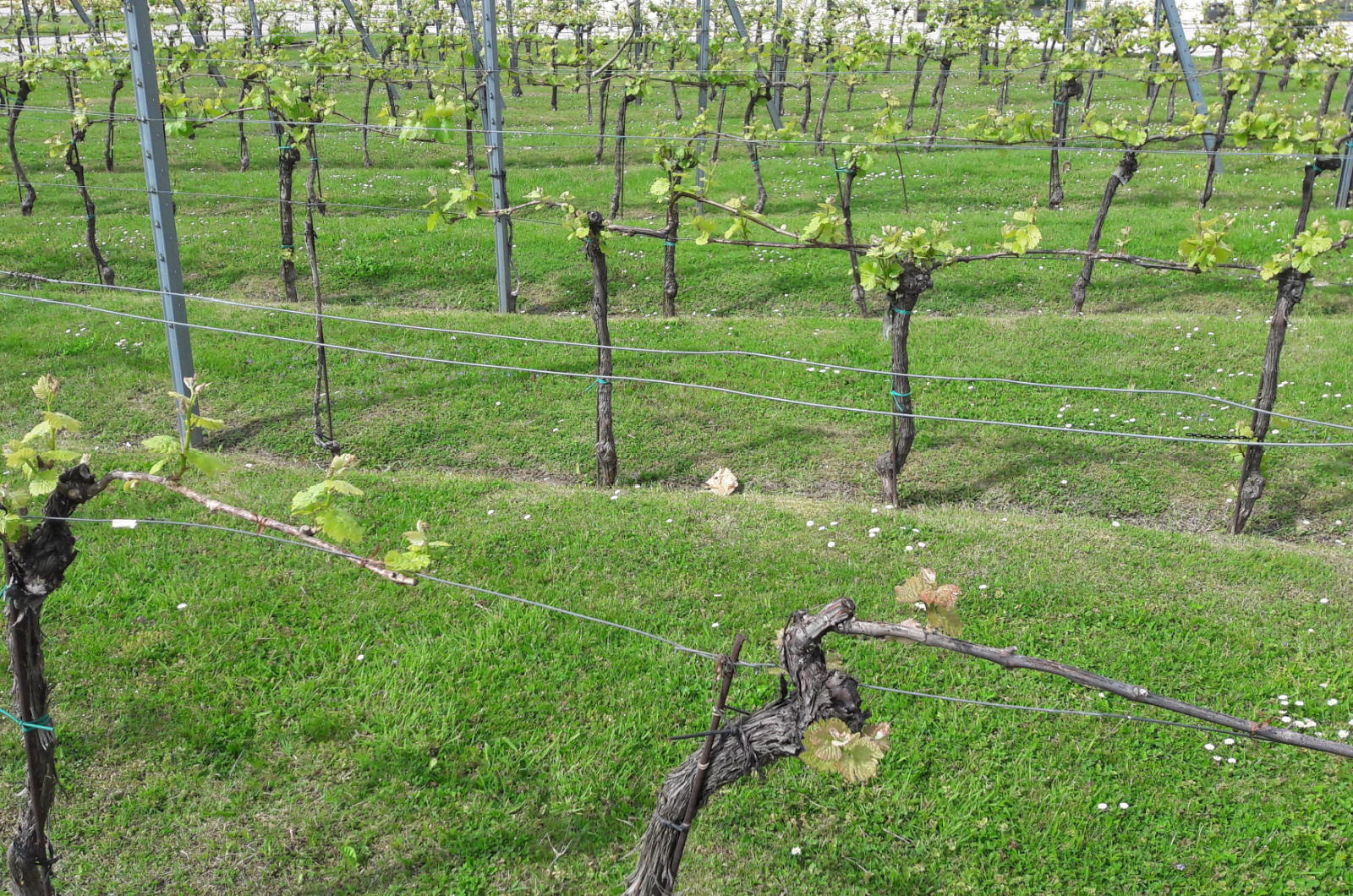This North American grape variety is one of the native vines that thrive throughout the country, yielding numerous bronze-to-black fruits.
It’s highly adapted to warm and humid climates, but it can tolerate colder regions with proper winter protection (mulching, using freeze covers, etc.)
So, how to grow muscadine grapes successfully? Well, as long as you plant them in a hot location with plenty of sunlight and prune them regularly, you’re bound to have an enormous harvest.
But there are some other things that can help you get the grape yield of your dreams, such as preparing the soil, trellising them, etc.
Without further ado, let’s get started!
Growing Muscadine Grapes
Grapes are on almost every list of fruit vines to grow in your garden, and for good reason. They yield delicious fruits and aren’t that difficult to grow if you put in some time and effort.
Muscadine grapes, in particular, are quite popular because they flourish in zones 6-10.
Here are some planting and care tips that can help you get bumper crops year after year!
4 Planting Tips
The first thing you need to do is choose your variety. You can go with self-fertile ones if you don’t have enough space, or you can pick those that need other muscadines to be pollinated if you have a larger garden or an orchard.
And once you get that covered, you can get to planting. The key is to grow them where temperatures don’t plunge below 5°F, although anything with winters warmer than this is better.
Here are some more tips for planting muscadine grapes in order to get a great harvest!
#1 Timing
Muscadine grapes usually arrive bare-root and are best transplanted in late winter, or rather from November to February.
This is the time when these vines are dormant during this period and will go through less stress than if you planted in mid-spring or summer.
In fact, if you do plant them during this period, you will have to irrigate them constantly, which isn’t the case with winter planting.
And if you want to grow your muscadines in containers, you can plant them anytime of the year provided you keep them sheltered from heat and irrigate them constantly.
#2 Light Requirements
Your muscadine grapes will flourish if you expose them to full sun, which should be at least 6-8 hours of direct light every day.
There’s no harm in keeping them in light shade at certain times of the day, but too much shade will reduce their fruit production.
Lack of sunlight can also make the cordons leggy and entice them to aggressively grow in search of more light. This will put a larger portion of your garden in shade and reduce the amount of sunlight the inner parts of your grape canopy will receive.
#3 Soil Preparation
Muscadine grapes thrive in loose, sandy, fertile, and well-drained substrates. If your garden soil is on the heavier side, you should amend it with compost or make some leaf mulch and use that.
These organic materials will make the soil more fertile and well-draining, preventing excess moisture from clogging your grape trunk roots.
Additionally, these vines thrive when pH levels are between 5.5 and 7.0. Anything more acidic than that will limit the growth and overall yield of muscadine grapes. (1)
#4 Transplanting
Once you amend the soil to fit these conditions, you can start making holes. If you want to grow them in the ground, make a hole 3 inches deeper than the top roots and wide enough to fit them all in.
And if you want to grow these vines in containers, bury them about an inch deeper than they were in their original planter.
Of course, untangle the bound and intertwined roots, spread them into the planting hole, backfill it with more soil, and pat it down a bit.
If it’s going to rain in the next couple of days, you don’t have to water your muscadines. But if there’s no precipitation, you should irrigate them within the first few days after transplanting.
And don’t fertilize these plants when planting. Allow the substrate to settle down and feed them in spring the following year and every season after that.
Finally, you can apply some organic mulch to insulate the soil and keep the roots warm and moist enough. Just don’t use too much mulch because it can prevent oxygen and moisture reaching the roots or keep the soil too moist for too long.
4 Care Tips
Some of the main things you’ll need to do soon after planting are pruning and trellising. These will ensure your muscadines flourish.
And don’t forget regular watering and pest and disease control.
Here are some tips that can help you with all this!
#1 Pruning
You should prune your muscadine grape immediately after planting and reduce it to only one stem containing three or four buds.
As your vine begins to grow, it can become quite messy, so you should trim it regularly to avoid any entanglement.
The best time to cut back grapes is during its dormant stage. This is the time to get rid of any dead, diseased, or damaged shoots. Remember to only keep the strong vines and get rid of all weak growth.
Thin the side shoots at about one shoot per six inches. And once they start producing fruit, you can reduce the number of bunches if you want larger grapes. Aim for one bunch per shoot after it appears in summer.
#2 Trellising
After the initial prune, start training your single vine onto the trellis. Place a sturdy support right next to it, but make sure not to disturb the roots too much. It would be best if you could install the trellis before planting.
Then, tie your stem to the trellis with a twine or zip ties and continue fastening your plant to the trellis as it grows.
And if you want to increase your yield, install multiple stakes and connect them with horizontal wires. Train your grapes on these wires and occasionally tie them.
P.S. If your plant grows some shoots from the buds, you should remove them at this point and leave only one to act as a trunk.
#3 Water Requirements
Newly planted muscadines require regular watering, at least once per week. Continue this until your plants get established (there’s new growth appearing) and then you can reduce it because muscadines are fairly drought-tolerant.
Reduce the watering during colder periods and never overwater these grapes. They hate soggy soils.
#4 Dealing Pests And Diseases
Muscadine grapes are fairly resistant to pests and diseases, but they can get afflicted by aphids, thrips, flea beetles, mealybugs, root borers, downy and powdery mildew, etc.
And the risk of these attacks increases when these grapes are stressed, such as from waterlogging or constantly having their foliage wet. You can deal with fungal diseases such as mildew by using fungicides.
You should also treat pest infestations as soon as you notice them because both them and the birds feeding on them can damage your grapes. Spray them with organic insecticides and your troubles will become a thing of the past.
2 Propagation Tips
You can grow muscadine grapes either from cuttings or seeds. Here are the details of both methods so that you can decide which one suits you best.
#1 From Cuttings
Propagating muscadines from cuttings is an easy and surefire way to get more vines. All you have to do is take a couple of softwood cuttings from your plant and plant them in soil.
The best time for taking these cuttings is in summer. Just make sure you use clean and sterilized tools since you can easily infect your plants with bacteria or fungi when using dirty pruners.
Ensure that the cuttings are about 6 inches long and remove the foliage from the bottom half. Remove the bottom of the cutting up to the leaf node, dip it in a rooting hormone (if you want) and plant it in a seed-starting compost.
Use a humidity dome or a plastic bag to cover the cutting and increase humidity and moisture. If the soil gets dry, propagation will fail, and this trick can help you prevent that.
If you don’t keep your cuttings in direct sunlight, and water them frequently you should notice roots appearing in about 2 months.
And if you find this entire process a bit overwhelming, you can always propagate these grapes by layering. Simply bend one of the lower vines and bury it into the soil.
Once it develops its own root system and you can’t easily pull it out of the ground, you can separate it from the main tree and transplant it into another location.
#2 From Seed
After you harvest muscadine grapes, you can save some seeds and plant them the following year.
Remove the flesh and keep the clean seeds in your fridge for up to 3-4 months. You can plant them to a depth of about half an inch in a nursery pot filled with seed-starting mix and keep them moist at all times.
A humidity dome can help you prevent the soil from drying out, which makes your job a lot easier.
Once the seeds germinate and seedlings overgrow the current pot, you can move them to a larger planter until they are ready to be transplanted into the garden. You can do this from November to February, when your vines become dormant.
But know that growing muscadine grapes from seeds is a long and tedious process. It may take several months for them to sprout and it will likely take a whole year before you can transplant them to their final destination.
Time It Takes Muscadine Grapes To Grow
Growing any kind of grape vine requires patience because it may take several years from planting to a truly abundant harvest.
However, when planting muscadines, it really depends on the size of the vine you started with, whether you propagated it from cuttings or seeds, and when you transplanted it.
For instance, larger, container-grown muscadines are most likely to produce fruit quickly after planting.
Generally speaking, muscadine grapes take about three years to fully mature and produce fruit. They’re still getting established in their second year of growth, and fruit the following one.
There’s also a difference between vines started from cuttings and seeds. Those started from cuttings usually take about three years to fruit, while ones started from seeds may take as many as six years.
But once you get over this initial waiting period, you’ll be rewarded with bountiful harvests year after year.
References:
1. Cummings, G. A. & Lilly, P. (1984). Soil pH Rate for Fruit Yield and Elemental Concentration of Muscadine Grapes. HortScience.

